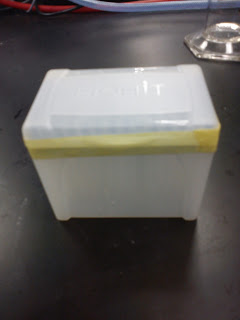Introduction
A growth medium or culture medium is a liquid or gel designed to support the growth of microorganisms or cells. For any bacterium to be propagated for any purpose, it is necessary to provide the appropriate biochemical and biophysical environment. The biochemical (nutritional) environment is made available as a culture medium, and depending upon the special needs of particular bacteria, a large variety and types of culture media have been developed with different purposes and uses. Different types of media are used for growing different types of cells. There are two major types of growth media, mainly those used for cell culture (which use specific cell types derived from plants or animals) and microbiological culture (which are used for growing microorganisms such as bacteria or yeast). Nutrient agar is a microbiological growth medium commonly used for the routine cultivation of non-fastidious bacteria. The nutrient broth contains 3.0 g/L “Lab-Lemco” powder (a beef extract), 2.0 g/L yeast extract, 5.0 g/L peptone (a nitrogen source), and 5.0 g/L sodium chloride. The ready-made nutrient agar contains 15 g/L agar and the same contents as the manually-made nutrient medium. The final pH of both media has to be 7.4.
Sterilization is defined as the complete destruction of all forms of microbial life, including bacterial spores. Steam sterilization generally denotes heating in an autoclave employing saturated steam. An autoclave is a large pressure cooker; it operates by using steam under pressure as the sterilizing agent. High pressures enable steam to reach high temperatures, thus increasing its heat content and killing power. Autoclave sterilizes equipment and supplies by subjecting them to high pressure steam at 121 °C or more, typically for 15 to 20 minutes depending on the size of the load and the contents. During sterilization, the materials are put inside the chamber of the autoclave and then the door is sealed while highly-pressured steam is forced into the chamber until the pressure rises above 103 kPa. High pressure is needed in order to prevent solutions from boiling. The materials can be removed after the sterilization and when the steam pressure has slowly decreased to the atmospheric pressure.
Objective
To prepare sterile nutrient agar using ready-made powders and manually-prepared powders for the culturing of microorganisms.
Materials and Reagents
Ready-made commercial nutrient agar
Balance
Distilled water
Scott bottles
Measuring cylinder
Beaker
 |
| Beaker |
 |
| Forcept |
 |
| BHI agar Solution |
 |
| Distilled water |
 |
| Pipette tips (small) |
 |
| Pipette Tips (big) |
 |
| BHI Agar Powder |
 |
| Measuring Cylinder |
 |
| Autoclave cage |
 |
| Autoclave |
 |
| Autoclave |
 |
| Autoclave |
 |
| Autoclave |
 |
| Distiller |
 |
| Agar Power |
 |
| MRS Broth |
 |
| Agar powder |
 |
| Weighing broth |
 |
| Broth |
 |
| Peptone |
 |
| Temperate and time |
 |
| Autoclave |
Procedure
Refer to lab manual three.
Discussions
In the process of preparing culture medium, there are many precautions steps to be taken. Before the culture medium powders could be weighed, the pan and inside of the balance must be cleaned with a brush so that it is free from anything on and around its surface. The door of the balance machine should also be closed before weighing any substances and ‘tare’ button can only be pressed after the container is put onto the balance. Also, the balance should be allowed to stabilize for 1 minute after it has been on. These steps are important in order to obtain an accurate reading. Moreover, the distilled water in the measuring cylinder should not be poured all out into the beaker, because there should be some distilled water reserved for the washing of leftover powders from the weighing container into the beaker. The culture medium should also be observed from time to time on the heater and only can be removed when the medium has turned from murky to clear condition. This step is to ensure that all the agar powder has dissolved in the culture medium. In the final step when all of the medium have been poured into the Scott bottles, we have to label each bottle and loosen the cap of the bottles before putting them into the autoclave machine. This is because the autoclave machine operates under high steam pressure and by loosening the cap will allow expansion of the bottle so that the bottles will not be broken. However, after the autoclaving process has ended, the Scott bottles can be removed from the machine and the cap of the bottles should be tightened. The bottles should also be turned over again for a few times to allow a balance distribution of agar in the bottle so that no agar will solidify at the bottom of the bottle. This step is to make sure that the culture agar can be used for the pour-plate in the next laboratory work.
References
http://lecturer.ukdw.ac.id/dhira/NutritionGrowth/culturemedia.html
http://en.wikipedia.org/wiki/Growth_medium
http://www.tutorvista.com/ks/nutrient-medium-of-bacteria
http://www.lbl.gov/ehs/biosafety/Biosafety_Manual/html/sterilization.shtml
http://esf.uvm.edu/uvmsafety/labsafety/biosafety/autoclaves/autoclaves.html

